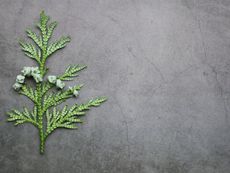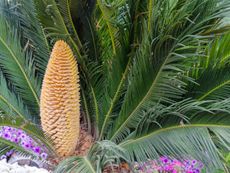Trees
Trees are normally a welcome addition to the home landscape, so finding tree growing information is an essential part of their care. Whether you are needing this information for planting trees, the pruning of trees, or getting rid of ornamental trees that have outlasted their welcome, the following pages should help. Keep reading to find the type of tree care information that meets your needs. Our tree growing information continues to grow, so if you don’t find it now, keep checking. New articles are regularly added.
Explore Trees
Trees
-
Ralph Shay Crabapple Care: Growing A Ralph Shay Crabapple Tree
Ralph Shay crabapple trees are mid-sized trees with dark green leaves and an attractive rounded shape. These crabapples are on the large side and are suitable for growing in USDA plant hardiness zones 4 through 8. Click this article to learn more about them.
By Mary H. Dyer
-
Adams Crabapple As A Pollinizer: Tips For Growing An Adams Crabapple Tree
Beautiful the tree may be, but there is another important reason for growing an Adams crabapple; it is a great choice for pollinating other varieties of apple. Click here to find out how to grow an Adams crabapple and information about Adams crabapple care.
By Amy Grant
-
Peachleaf Willow Facts – Peachleaf Willow Identification And More
Few trees are easier to grow than native willows. Peachleaf willow trees are no exception. It’s not hard to identify peachleaf willows since they have leaves that look similar to the foliage of peach trees. Click here for peachleaf willow facts that describe this native tree.
By Teo Spengler
-
Whipcord Cedar Care – How To Grow Whipcord Western Red Cedars
When you first look at Whipcord western red cedars (Thuja plicata 'Whipcord'), you might think you're seeing a variety of ornamental grass. It's hard to imagine Whipcord cedar is a cultivar of the arborvitae. Click this article for more information.
By Laura Miller
-

What Is Frost Crack: What To Do For Cracking Tree Trunks
During periods of cold winter nights followed by warm sunny days, you may discover frost cracks in trees. Read this article for more information on tree bark cracking. Learn more here.
By Jackie Carroll
-

What Is Tree Wound Dressing: Is It Ok To Put Wound Dressing On Trees
When trees are wounded, through pruning or accidentally, some gardeners try to help by applying a tree wound dressing. But are there any real benefits of wound dressing on trees? Find out here.
By Jackie Carroll
-
Clove Tree Sumatra Info: Recognizing Sumatra Disease Of Cloves
Sumatra disease is a serious problem that affects clove trees, particularly in Indonesia. It causes leaf and twig dieback and will, eventually, kill the tree. Learn more about clove tree sumatra disease symptoms and how to manage and treat cloves with sumatra disease here.
By Liz Baessler
-
Acoma Crepe Myrtle Care: Learn How To Grow An Acoma Crepe Myrtle Tree
The pure-white ruffled flowers of Acoma crape myrtle trees contrast dramatically with the shiny green foliage. For more information about Acoma crape myrtle trees, click here. We'll give you instructions on how to grow an Acoma crape myrtle and its care.
By Teo Spengler
-

Japanese Elkhorn Cedar: Tips On Growing An Elkhorn Cedar Plant
Elkhorn cedar is a coniferous evergreen tree native to the wet forests of southern Japan. It doesn't thrive in all environments and, as such, it's not always easy to find or keep alive; but when it works, it's beautiful. Learn more in this article.
By Liz Baessler
-

Toddy Palm Tree Info – Learn About Growing Toddy Palms
The toddy palm is known by a few names: wild date palm, sugar date palm, silver date palm. But what is a toddy palm? Click on this article to learn about toddy palm tree info and toddy palm tree care and see if this plant is right for you.
By Liz Baessler
-

Red Buckeye Tree Growth: Tips On Planting A Red Buckeye Tree
Red buckeye trees are relatively easy to care for, medium-sized trees or shrubs that produce showy red flowers in the spring. They are a great choice for large, easy decoration along borders. Learn more about red buckeye tree care in this article.
By Liz Baessler
-

How To Tell How Old A Tree Is
Ever wondered how to calculate the age of a tree? Click here to learn all about it.
By Teo Spengler
-

Do Sago Palms Flower: Identifying Flowering Sago Palms
Do sago palms flower? Yes, they do. If you notice an unusual-looking structure protruding from the center of your sago plant, this is the sago palm flower. Learn more in this article.
By Nikki Tilley
-

Cleveland Select Pear Info: Flowering Pear ‘Cleveland Select’ Care
The Cleveland Select is a variety of flowering pear that is very popular for its showy spring blossoms, its bright autumn foliage, and its sturdy, neat shape. If you want a flowering pear, it's a good choice. Click here to learn more about growing Cleveland Select pears.
By Liz Baessler
-
Common Pindo Palm Pests – How To Control Pests Of Pindo Palm Trees
Pindo palms are generally very healthy trees if planted appropriately. However, there are a few insect pests of pindo palm trees, including the palm leaf skeletonizer and scale insect. For more information on pindo palm pest problems, click here.
By Teo Spengler
-

Acacia Cutting Propagation – Learn How To Root Acacia Cuttings
Acacia cutting propagation isn't very difficult. But if you want to start growing acacia plants from cuttings, there are a few important points to keep in mind. For information on how to root acacia cuttings and tips on how to plant acacia cuttings, this article will help.
By Teo Spengler
-

Poplar Tree Cankers – Learn About Canker Disease In Poplar Trees
Cankers are physical deformities that may indicate a serious poplar tree disease. They are often the first in a series of symptoms that can end in the death of the tree. Learn about canker disease in poplar trees in this article.
By Jackie Carroll